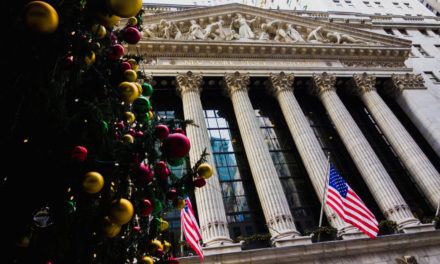There’s no such thing as a “recession-proof” portfolio, and the 2008 financial crisis left many wondering — especially those in retirement or close to it — how they could protect themselves from the next inevitable market crash.
People in or nearing retirement are particularly vulnerable because they have likely passed their peak earning years and have far less time to earn and recover from a downturn.
So everyone’s big question is how can you invest your money so it won’t disappear again in a few years?
After 47 U.S. recessions, there is still no firm answer.
But a recent article in Forbes notes that while no portfolio is “recession-proof,” you can set up a portfolio to be largely “emotion-proof,” setting yourself up in the best possible to way to ward off the next recession.
Per Forbes:
From the Great Depression to the Great Recession, economic disasters have become embedded in our cultural subconscious like a recurring nightmare… But must we always live with the threat of waking up in a cold sweat?
As if market volatility weren’t enough of a boogeyman, we’re also fighting against human nature. Biologically it seems we’re programmed to make absolutely terrible choices when it comes to money and investments. Not only do we spend too much money on frivolous, instant-gratification purchases that prevent us from saving for retirement, but apparently we also have no idea how to play the market.
Even though “buy low, sell high” should be programmed into all our psyches by now, many investors seem to do the exact opposite. The average investor has earned total returns of just 2.5% over the past 20 years, while the S&P 500 has returned an average of 9.5%.
The reality is that we’re never able to control the markets or the economy. What we can control is our emotions, particularly when it comes to the markets.
To keep my clients sane and their money protected before, during and after a recession, I sit down with them for something I like to call the “income generation conversation.” We touch on a lot of different topics, but one of the most important is the emergency fund. You’ve likely heard many times that it’s good to have between three and six months’ worth of living expenses set aside in the event of a job loss, health crisis, or other unforeseen circumstance. What you likely haven’t heard is that those numbers only make sense when you’re actively employed. Once you’re retired, you need to have a full five years’ worth of living expenses in cash, or at least out of the market.
Before you start complaining about how much money that is, stop and think about what it would feel like to have to draw down on your accounts while the market is at a low point. Chipping away at your savings before they’ve had a chance to recover means a double whammy for your wallet.
Perhaps you did the math and know that you have enough saved to last until you’re 100. Good for you. But what happens if you’re forced to take withdrawals after the market loses another $6.9 trillion in shareholder wealth, like it did in 2008?
Five Separate Retirement Portfolio Recommendations
- Portfolio A: Determine how much money you need to support your lifestyle for five years, and take those funds out of the market. Put them in a layered CD or bond portfolio, or even fixed annuity to make sure that you always have your near-term cash flow secured.
- Portfolio B: This portfolio will be the next one you tap if a recession comes and you spend through Portfolio A. Since it will have at least five years to grow to replace portfolio A, it can take on some risk, but to be safe we should only assume a 3% rate of return during that time frame. (For context, 100% equity portfolios in large company stocks have been shown to recover all losses over a five-year period. But portfolio B should be no more than 40% equities.)
- Portfolio C: If you’re following along, you’ll know that this portfolio will have ten years to grow before one might need it to support their lifestyle. Here you can assume a bit more risk, since time is on your side. You can invest more in equities, and in good years when you exceed 4% growth, you can use your excess to make up for possible inflationary increases in your lifestyle.
- Portfolio D: This portfolio has—you guessed it—15 years to grow. Here, one can feel good about completely leaving emotion out of the equation and knowing that you’ll see the markets recover before you need this money.
- Portfolio E: Here you’ll leave excess money that you want to grow, and annually you can move the money over to cash. Remember that cash is a non-taxable liquid asset, and it is your friend. You can use it to move into a retirement facility, or give it away to family.
Keep scrolling down to read more retirement investment tips on Money & Markets.




